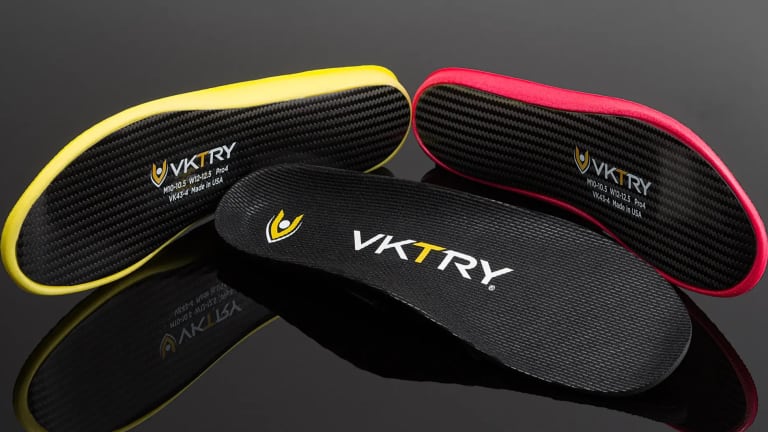If you’ve ever seen a pro athlete gift a pair of shoes to a fan after a game, it’s not unusual to see them remove the insoles before handing them over. It’s not because they’re sentimental or embarrassed by the smell. The reason is they don’t want to lose their custom orthotics or performance insoles. These additions to their shoes can improve the fit, better protect their feet, and take their games to new heights.
VKTRY insoles are designed with that purpose. The insole that comes standard in most athletic shoes is generally just a soft, thin layer of foam. It’s primary purpose is to offer another modest level of cushioning. Created by the former Pedorthist of the US Olympic Bobsled Team, VKTRY insoles are made with an aerospace-grade carbon fiber baseplate that not only helps dissipate shock on landings, but propels the foot forward with each stride. It’s intended to add inches to your vertical, and take seconds off your sprints.
Being so much more resilient than the typical insole, the full-length carbon fiber design essentially stiffens the shoe. So when it flexes, it stores energy at the ball of the foot that ordinarily would be wasted, and then releases it like a spring. Videos of the insoles turning shoes into airborne missiles are all over social media. As the brand boasts on the box delivering the insoles: “Warning! Highly Explosive!”

